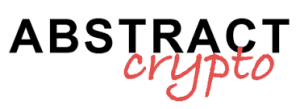The president of the Federal Reserve, Jerome Powell, has firmly reaffirmed that the U.S. central bank does not take into account the financing needs of the federal government when setting its interest rate policy.
During the press conference, Powell emphasized that the Fed acts solely based on the mandate received from Congress: keeping inflation under control and ensuring the strongest possible labor market.
“We have a clear mandate from Congress, and we do not consider the fiscal needs of the federal government. No central bank of an advanced economy does this, and it would not be positive if the Fed started doing it, because it would compromise its credibility.”
Powell affirms the independence of the Fed: a pillar for stability
The position of Powell reflects a broad consensus among economists: a central bank that shapes interest rates to reduce government financing costs risks losing control over inflation and compromising its independence. This principle is considered fundamental to maintaining confidence in the markets and ensuring that monetary policy remains an effective tool against price pressures.
After the monetary policy meeting, the Fed decided to keep its target range for overnight rates unchanged, setting it between 4.25% and 4.5%. Analysts and financial markets continue to closely monitor economic data, particularly to assess the impact of recent changes to import taxes and to anticipate a possible rate cut in September.
Pressures from the White House: Trump asks for rate cuts
In recent months, the Federal Reserve has been the subject of constant and often aggressive pressure from President Donald Trump, who has urged more decisive cuts to interest rates. According to Trump, a significant reduction in rates would be justified by several factors, including the increase in costs for servicing public debt, exacerbated by the current levels of rates.
Despite the cuts made last year, the Fed rates remain relatively high compared to the standards of recent years. In 2023, the government spent about 1.1 trillion dollars just on interest payments, a figure more than doubled compared to the pre-pandemic period. This increase is largely attributable to the Fed’s restrictive policies, adopted to cool inflation.
The risk of premature cuts: inflation and markets under observation
Trump has proposed lowering rates to 1%, arguing that this would help reduce public debt costs. However, most economists warn that such a move, in a context already marked by inflationary pressures and new trade tariffs, could prove counterproductive.
A cut in rates that is too rapid could indeed further stimulate the economy, fueling inflation and pushing bond yields upwards. In this scenario, the government would be forced to offer even higher rates to attract investors, thus exacerbating the problem of financing costs.
Past accusations and uncertain future
It is not the first time that the Fed has been accused of artificially keeping rates low to facilitate government deficit spending. However, the leaders of the central bank have always rejected these accusations, reiterating the need to maintain a clear separation between monetary policy and fiscal policy.
The issue of costs related to interest rates could continue to pose a challenge for the Fed, especially in light of the recent fiscal measures adopted by Congress. A new package of taxes and spending, promoted by the Republicans, is indeed destined to further increase the level of public debt, with the risk of further inflating the burdens for debt servicing.
The role of credibility: a delicate balance
The credibility of the Federal Reserve remains a crucial element for the economic stability of the United States. Powell reiterated that any deviation from the central bank’s institutional mandate, such as the adoption of policies aimed at favoring the government rather than the economy as a whole, would risk undermining investor confidence and compromising the Fed’s ability to keep inflation under control.
In a global context where no central bank of an advanced economy considers the fiscal needs of its government in defining monetary policy, the position of the Fed is confirmed to be aligned with international standards of independence and transparency.
Looking to the future: challenges and prospects
With monetary policy under the spotlight and political pressures set to intensify, the Federal Reserve will need to continue carefully balancing its mandate. The debate on interest rates and public debt costs is set to remain central in the U.S. economic and political landscape, especially in view of the upcoming decisions by the central bank and the fiscal developments promoted by the government.
The challenge will be to stay the course, ensuring price stability and the solidity of the labor market, without giving in to short-term pressures and safeguarding the independence of monetary policy as a guarantee of credibility and sustainable growth for the American economy.


